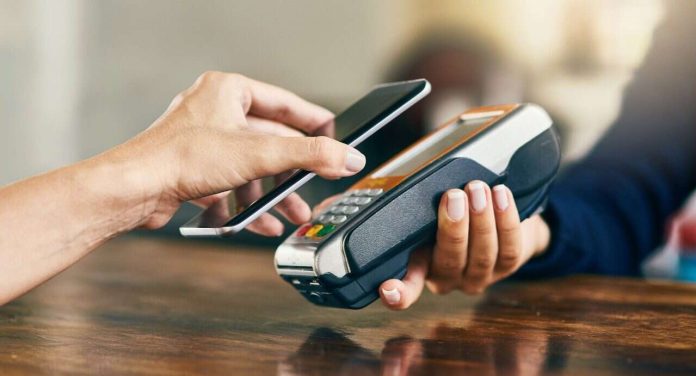FINTECH- Contactless payment has become an increasingly popular way of making transactions in recent years, and for good reason. With the rise of mobile payments and the COVID-19 pandemic, more and more people are opting for contactless payment methods to avoid physical contact and minimize the spread of germs. In this article, we will explore what contactless payment is, how it works, and its advantages and disadvantages.
What is Contactless Payment?
Contactless payment is a form of payment that uses near-field communication (NFC) technology to transfer funds between a card or mobile device and a payment terminal without the need for physical contact. It allows consumers to simply wave their card or mobile device over a contactless-enabled terminal to make a payment.
How does Contactless Payment Work?
Contactless payment uses NFC technology to transmit data between a card or mobile device and a payment terminal. The process works by utilizing radio waves to communicate between the two devices. The payment terminal emits a radio frequency signal that is picked up by the card or mobile device, which then sends back a signal with the necessary payment information.
To use contactless payment, consumers need to have a card or mobile device that is equipped with an NFC chip. Contactless-enabled terminals have a symbol on them that indicates that they accept contactless payments. Once the consumer waves their card or mobile device over the terminal, the payment is processed within seconds.
Advantages of Contactless Payment
- Convenience: Contactless payment is quick and easy to use. It allows consumers to make payments quickly and efficiently without the need to enter a PIN or sign a receipt.
- Speed: Contactless payment is significantly faster than traditional payment methods. The entire transaction takes only a few seconds, making it a great option for busy retailers and consumers on the go.
- Security: Contactless payment is generally considered to be more secure than traditional payment methods. The technology used in contactless payment ensures that payment information is encrypted and protected, reducing the risk of fraud.
- Hygiene: With the COVID-19 pandemic, contactless payment has become more popular due to its hygienic nature. Consumers can avoid physical contact with payment terminals, which can help reduce the spread of germs.
Disadvantages of Contactless Payment
- Limitations: Contactless payment is only available to consumers who have a card or mobile device that is equipped with an NFC chip. Not all retailers have contactless-enabled payment terminals, so consumers may not always be able to use this payment method.
- Security concerns: While contactless payment is generally considered to be more secure than traditional payment methods, some consumers still have concerns about the security of their payment information.
- Transaction limits: There are typically transaction limits for contactless payment. Consumers may not be able to make larger purchases using contactless payment, which can be inconvenient.
Contactless payment is a convenient and efficient payment method that is becoming increasingly popular with consumers. It offers a quick and secure way to make purchases without the need for physical contact. While there are some limitations to contactless payment, the advantages generally outweigh the disadvantages, making it a viable payment option for many consumers. With the continued development of technology and the increasing adoption of contactless payment by retailers, it is likely that this payment method will become even more popular in the years to come.








